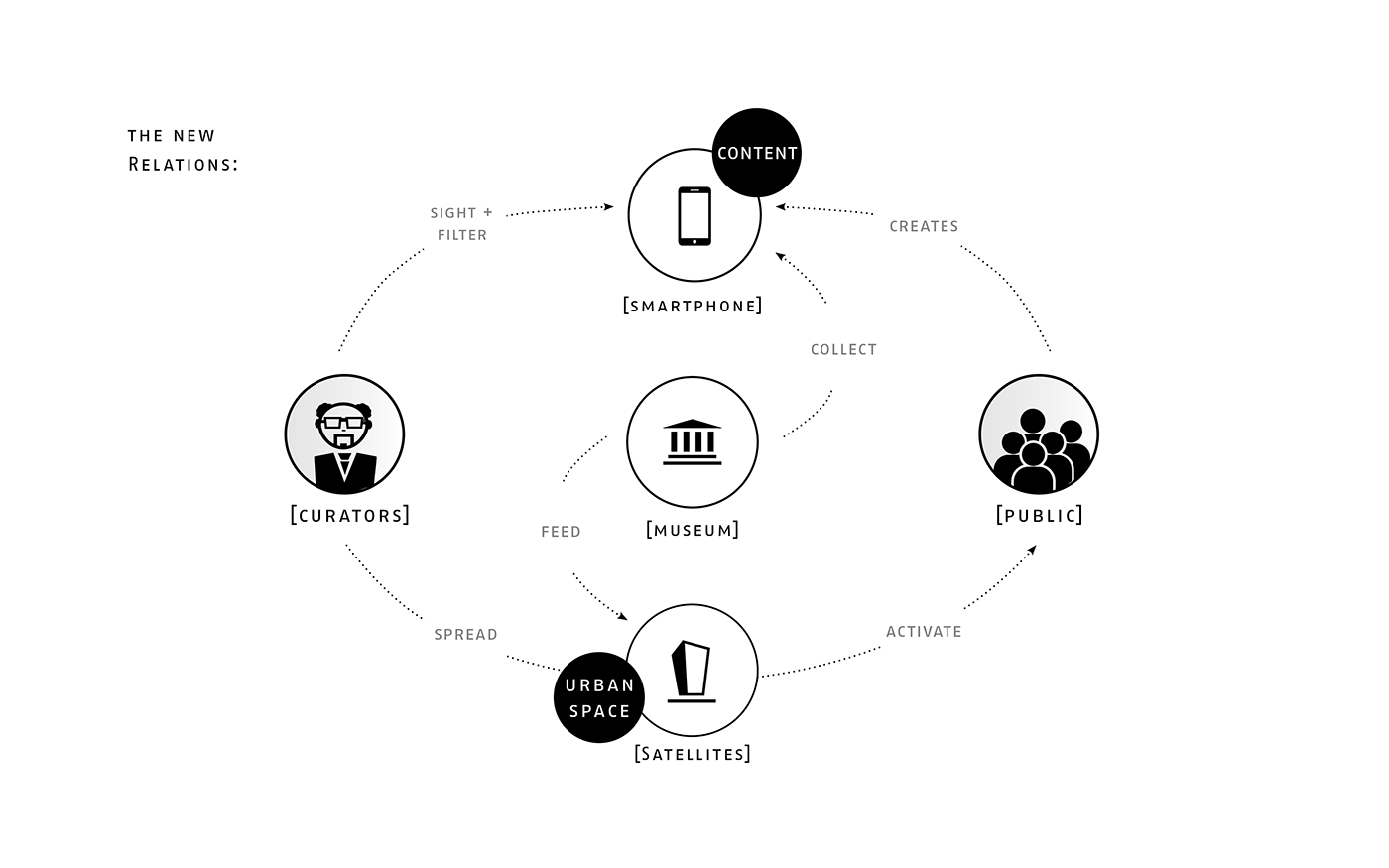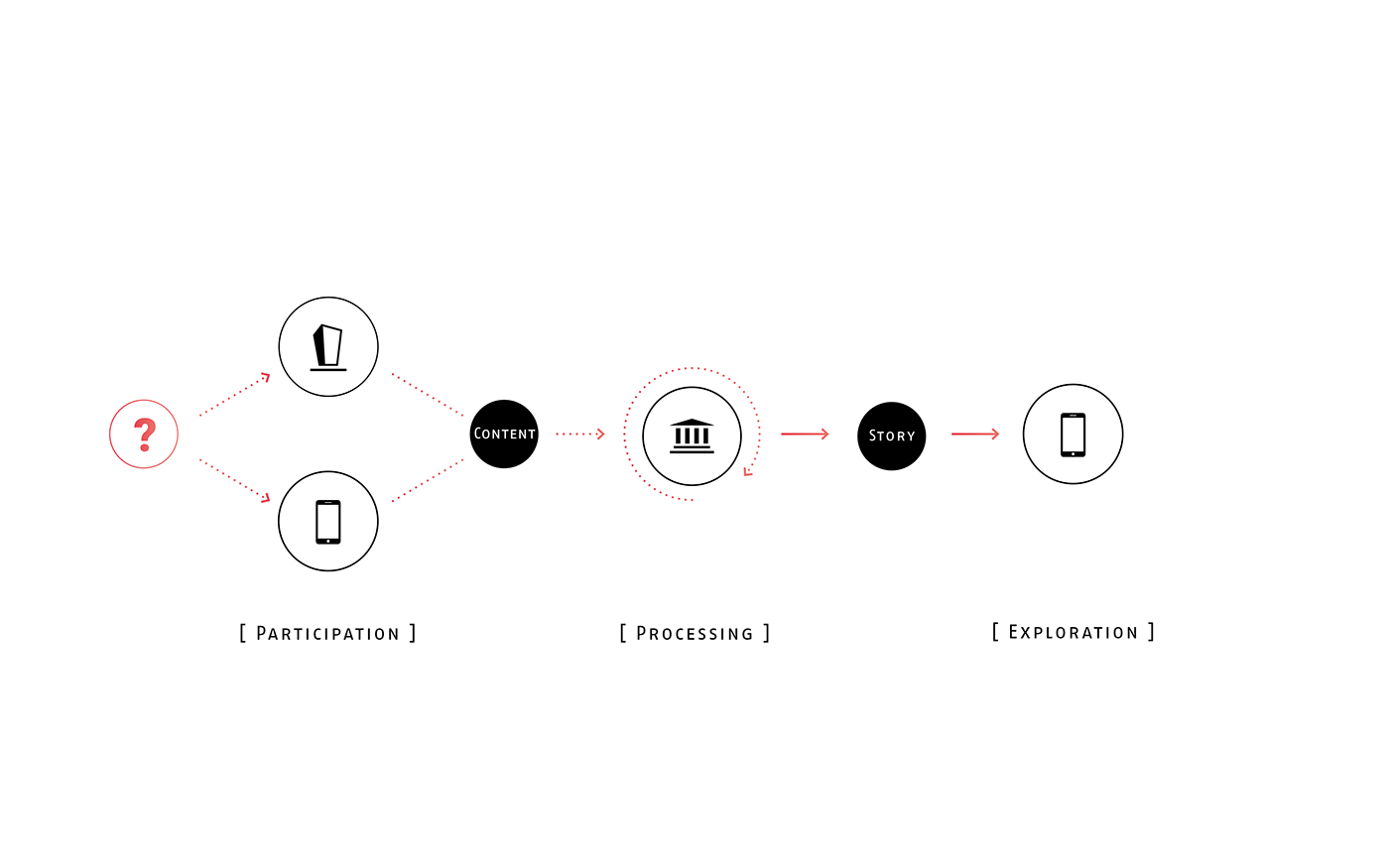

The mood of Tel Aviv


The idea:
Every city is filled with different stories,opinions and topics,
different urban shades.
Nine different topics are chosen to represent the diversity within an own exhibition cycle.
The concept of urban shades is a practical proposal for modern city museums. It reacts on the complexity and diversity of urban environments and highlights in several cycles different relevant urban topics.
Main goal is to enlarge the classical sphere of action and communication with a highly participative principle. urban shades combines personal perceptions and qualitative information to a dynamic concept, which writes the story of a city, with the city while it is happening.





1. The Urban Explorer

Interface: Participation mode to generate content
The Urban Explorer:
The smartphone app urban explorer, is the connection between museum and individual, active citizens. The app functions as tool to capture personal perception in urban space, which rises awareness by asking explicit questions. The digital tool calls it users to confront themselves with their environment and current relevant urban topics.
The created personal perceptions of the citizens play an important role for the exhibition cycles of the urban shades: The personal content will be transferred to the museum where it will be processed and complement to develop a participated, crowed-sourced storyline.




2. The Urban interfaces

Urban Interface located on Rothschild Boulevard, Tel Aviv
General mission of the Urban Interfaces:
The nine muses are designed to be spread in the urban environment, to build a bridge between museum and city, to rise attention and activate people. They spread questions and information into the urban space. They react on their environment and allow different kind of interactions.

Spreading the Urban Interfaces:
At the beginning of each thematic exhibition cycle, the city will be examined to find urban spots or places which are relevant for the urban topic of the exhibition cycle.
These structural manifestations can have different qualities and appearances as long as they have a historical or current, social, political or structural relation to the topic [migration].
First aim is to highlight these spots temporary in the urban environment. Second aim is to reach citizens that may have a connection to these places (and so to the topic) and activate them for a valuable participation.

Different kind of User Interactions
Purpose 1: Emission
Main job of the nine muses is to build a informative and sensitive bridge between the museum and the city:
The purpose of these smart “particles” is to spread auditive questions, developed in the museum, into the urban space, to rise attention, awareness and reflection of the citizens.
Purpose 2: Absorption
In addition to the absorption of movements and sounds (which create an immersive bridge to the inside of the museum) the bodies of the Interfaces can be opened during the day and allow a semi-private space for active citizens, who want to participate and answer questions on the spot with their personal story, without downloading or using the smartphone app.
3. The museum

The Best Hair Museum, Bialik Square, Tel Aviv
New transparency
The space of Beit Ha'irs east wing can be seen as a processing-space of content, a container in which the crowed-sourced content will be collected, filtered and enriched through research and valuable information to contextualize them and create a storyline.
The Museum is a central place of the concept, next to the processing of content itself, main aim is to make the work of curators and experts transparent and to give visitors the option to become an active part of the process. The space offers the great potential to teach competences in handling media and data and to create a connection on eye-level between curator and visitor.

Installation: Incoming content generated with smartphones (URBAN EXPLORER)





